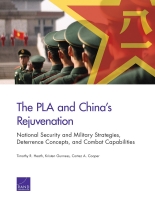 Summary
Summary
Recent analysis of China’s military modernization effort has focused heavily on the People’s Liberation Army’s (PLA) development of concepts and capabilities to deter or delay foreign forces responding to crises along China’s periphery. However, China developed these capabilities within the context of broader strategic requirements. This study describes China’s overarching national and security strategies and its approach to war and escalation control; summarizes its military capabilities developments; and reviews its concepts for deterrence in strategic and conventional domains. This report is intended as a general reference document for senior defense officials and other policymakers seeking an understanding of the links between China’s national development strategy and its security and defense policies, strategies and concepts.
The information in this report assesses the perceptions of China’s leaders on many critical issues — from their views of the international security environment and domestic and international threats, to their approaches to crisis management and escalation control, to the development of military capabilities and deterrence concepts. As this study indicates, these Chinese assessments are not static; they evolve as China’s standing in the world increases and its national interests grow, and the conclusions Chinese planners draw from such assessments also change. The necessity of continuing to monitor and analyze emerging literature and assessments on concepts discussed in this report — particularly those with broader implications for current events, such as China’s defense of territorial claims in the South China Sea and prospects for crisis management — will be crucial.
PDF
Skip to content
